Peter Dornauf – 25 December, 2015
Kihara cleverly uses gender ambiguity to subvert colonial images of Polynesian women as sexual objects by dressing and undressing herself in her mock photographs that mimic the representation of Samoan women as ‘native belles' ripe for the colonial gaze. With a touch of Cindy Sherman, she sets herself up in stereotypical studio photographs and challenges, by doing so, the ‘ethnographic' imagery of old. In this way she ‘undresses' colonial history both literally and critically, defying orientalist clichés.
Hamilton
Shigeyuki Kihara
Undressing the Pacific
14 November 2015 - 29 February 2016
The Victorians were an irrepressible and triumphalist race. Dickens delineated it as the best of times, but then again he also said it was the worst. From the point of view of the industrialists and the rising middle classes, it was a wonderful age of transition that represented a move from a moribund past to a beckoning bright future. Monet was painting his gardens and all was right with the world.
There were dissenting voices however; Dickens, as mentioned above, though he had a bob each way. Matthew Arnold was another who intoned about an age of doubt and living between two worlds, one dying, the other struggling to be born. But for those with less refined sensibilities, it was a time of progress epitomized by Charles Kingsley’s ‘gung ho’ march of civilization and muscular Christianity. That march, (onward and upward), was essentially a naked imperialist one which took the British Empire down to the Pacific to spread the good missionary word of ‘advanced’ European culture to improve the life of the natives.
There were a few who saw through the game, like Gauguin who fled Paris and the “disease of civilization” for the South Sea Islands, though he took some of the illness with him. In 1897, this hopeless romantic painted his famous Tahitian work, Where do we come from? What are we? Where are we going? The lines of the title were essentially phrases borrowed from a Roman Catholic catechism Gauguin had learnt as a boy from the Bishop of Orleans. These ultimate philosophic questions were in Gauguin’s case prompted by the death of the artist’s favourite daughter.
One hundred and sixteen years later in 2013, Samoan artist, Shigeyuki Kihara, reuses that same catechistic pronouncement as a title for her own photographic construction, depicting herself in a staged tableau standing outside a very English fabricated courthouse in Apia. She is dressed in an elaborate black Victorian mourning dress, so that the question, “What are we?” becomes one not of existential anguish but of conflicted cultural identity - with all the colonialist ramifications attached. Imperialism disrupted traditional identities and the artist grieves for that, layering the act by ironically using the grief costume of the colonists to communicate the fact.
What provides this question, in such a context, with another level of reflection, is the fact that the artist herself is a fa’afafine, a boy raised as a girl. Kihara is a third gender person, not gay but born a boy and constructed as a girl in a culture where gender identity becomes determined by the role the individual is given to play out in the family. In the hands of the artist this becomes material to use in a critical examination of Samoan cultural history.
Kihara cleverly uses this very gender ambiguity to subvert colonial images of Polynesian women as sexual objects by dressing and undressing herself in her mock photographs that mimic the representation of Samoan women as ‘native belles’ ripe for the colonial gaze. With a touch of Cindy Sherman, she sets herself up in stereotypical studio photographs and challenges, by doing so, the ‘ethnographic’ imagery of old. In this way she ‘undresses’ colonial history both literally and critically, defying orientalist clichés.
This strategy is seen particularly in a sequence of photographs entitled, Fa’afafine, from In the Manner of a Woman Series, 2005. The artist poses in a triptych of images that recall Goya’s Nude Maja and Clothed Maja, but the convention is overturned in the final nude shot of Kihara when after presenting herself as female, she reveals herself as male with an exposed penis that becomes a kind of one fingered ‘salute’. Resting herself on a cushioned divan also evokes the tradition of Ingres’ Grand Odalisque, and by association critiques all the patronizing elements of nineteenth century orientalism and alludes to the fact that Samoa, like other colonized states, became a kind of exotic concubine of the West.
Western religion in the form of Christianity was simply another manifestation of occupation or “outreach to the Empire” as characterized by the missionary Church. New gods replaced old gods in the same way that new forms of dress codes were imposed on indigenous cultures. Kihara works both into a lament when in Roman Catholic Church, Apia, (from the Where do we come from? series) the artist presents herself again in Victorian mourning dress standing in front of an amphitheatre-like church, looking ironically like some early Christian adherent thrown to the lions - a comment on how the oppressive tables get turned.
This touring exhibition, currently at the Waikato Museum, called Undressing the Pacific, comprises a mid-career survey that spans over a decade of works which also include performance pieces. The central performance work is entitled Taualuga: The Last Dance (2006-2011). Here Kihara explores the dynamics of cultural conflict via exploiting the incongruity of cultural miscegenation in a performance that involves a traditional Samoan dance while wearing the clothes of the Victorian colonist. The title is ripe with all kinds of rich ambiguity since the “last dance” could be read optimistically and/or sarcastically - alluding to that special one you’ll go home with, or negatively, as in it’s over, goodbye, (but read positively from the point of view of the dancer) or negative/positive as in it’s finished and now we can start afresh. All readings could in fact apply, simultaneously. The worst of times now become the ‘best’ of times in the post-colonial age.
Kihara bears witness to a troubled cultural past in her black and white and sepia toned photographs with hints of a new future with her Pop Art overlay/inset of Samoan children ‘dressed’ in colourful T shirts. The age of transition gives way to colour, hope and perhaps optimism, struggling to be born.
Her approach to the subject is particularly apt. As a third gender individual, the artist has had her sexuality socially reconstructed, made over into something she initially was not. She has taken that as a unique stratagem to critique the cultural reconstruction colonialism has had on Samoa itself. Microcosm is thus put to clever use in the critical examination of the macrocosm.
Kihara’s work is an acute example of the Pacific looking back with an oppositional gaze that confronts the European interlocutor with a look that ‘undresses’ all its triumphalist tropes.
In other staged photographs, the artist turns away with sorrow and looks, with her back to the viewer, at the deeds the ‘developer’ has wrought. In a photograph that recalls Casper David Friedrich’s Monk by the Sea, Kihara stares out - like some castaway - at the Pacific Ocean, contemplating not a mystic Wordsworthian oneness with nature but rather experiencing a sense of estrangement, as she gazes out (a little forlorn) at an overcast storm-laden sky.
Peter Dornauf
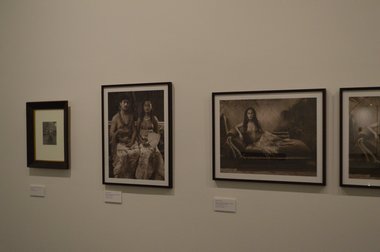
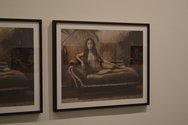
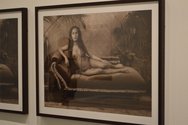
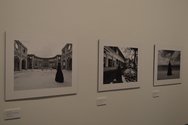
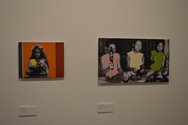
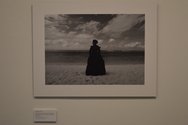
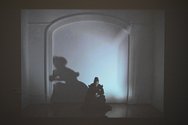
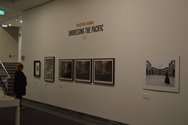
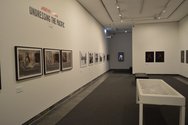
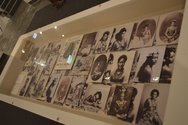
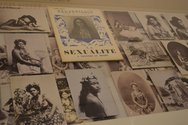
 Two Rooms presents a program of residencies and projects
Two Rooms presents a program of residencies and projects Advertising in this column
Advertising in this column



This Discussion has 0 comments.
Comment
Participate
Register to Participate.
Sign in
Sign in to an existing account.